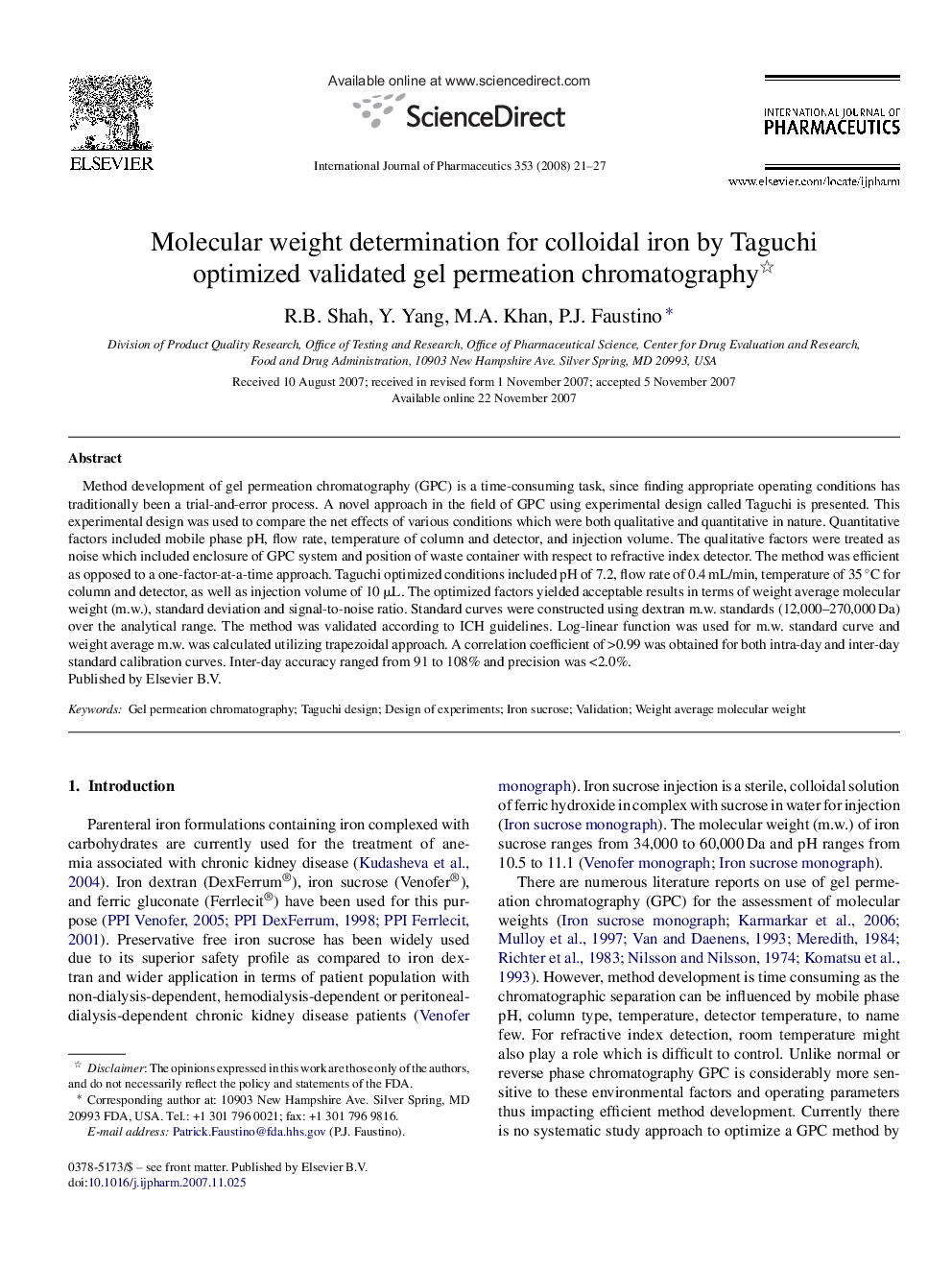| Article ID | Journal | Published Year | Pages | File Type |
|---|---|---|---|---|
| 2505655 | International Journal of Pharmaceutics | 2008 | 7 Pages |
Method development of gel permeation chromatography (GPC) is a time-consuming task, since finding appropriate operating conditions has traditionally been a trial-and-error process. A novel approach in the field of GPC using experimental design called Taguchi is presented. This experimental design was used to compare the net effects of various conditions which were both qualitative and quantitative in nature. Quantitative factors included mobile phase pH, flow rate, temperature of column and detector, and injection volume. The qualitative factors were treated as noise which included enclosure of GPC system and position of waste container with respect to refractive index detector. The method was efficient as opposed to a one-factor-at-a-time approach. Taguchi optimized conditions included pH of 7.2, flow rate of 0.4 mL/min, temperature of 35 °C for column and detector, as well as injection volume of 10 μL. The optimized factors yielded acceptable results in terms of weight average molecular weight (m.w.), standard deviation and signal-to-noise ratio. Standard curves were constructed using dextran m.w. standards (12,000–270,000 Da) over the analytical range. The method was validated according to ICH guidelines. Log-linear function was used for m.w. standard curve and weight average m.w. was calculated utilizing trapezoidal approach. A correlation coefficient of >0.99 was obtained for both intra-day and inter-day standard calibration curves. Inter-day accuracy ranged from 91 to 108% and precision was <2.0%.
